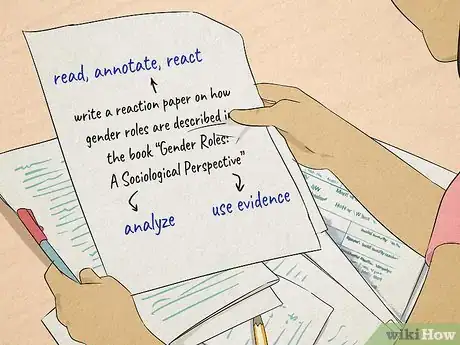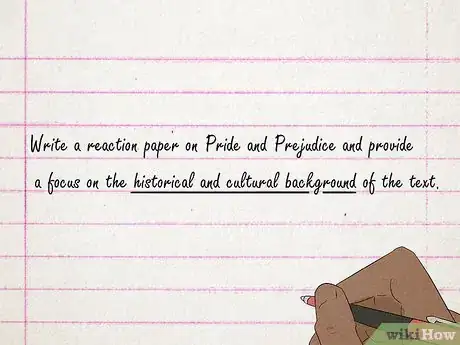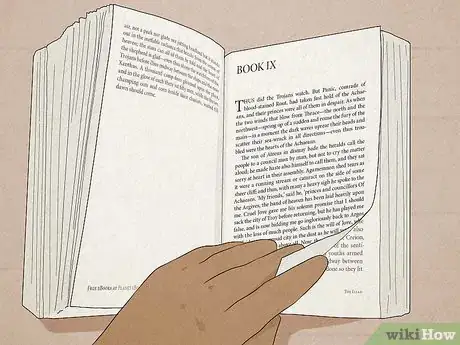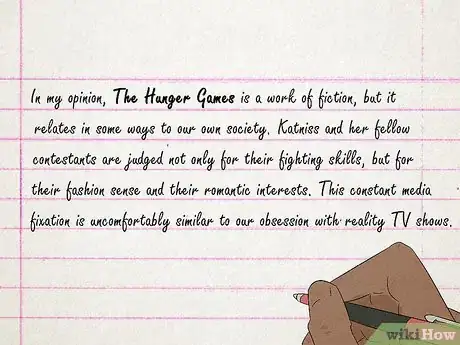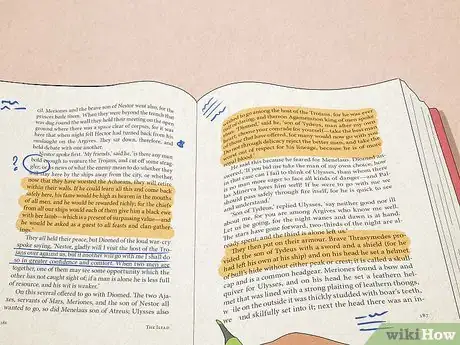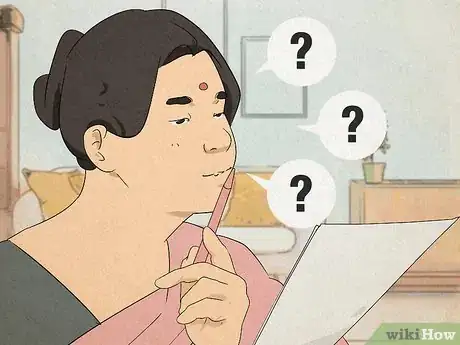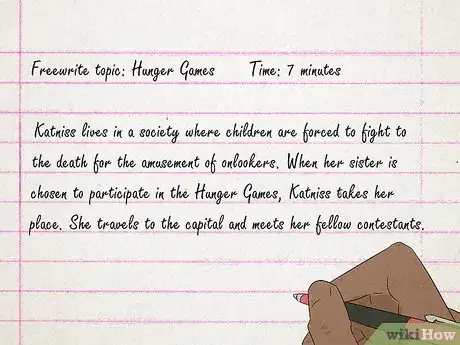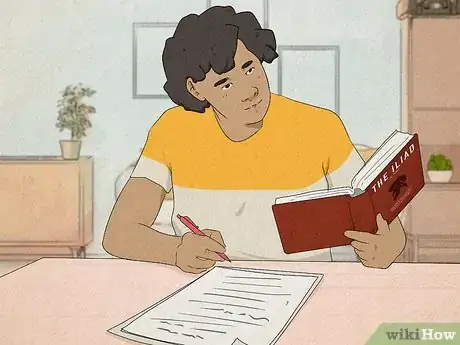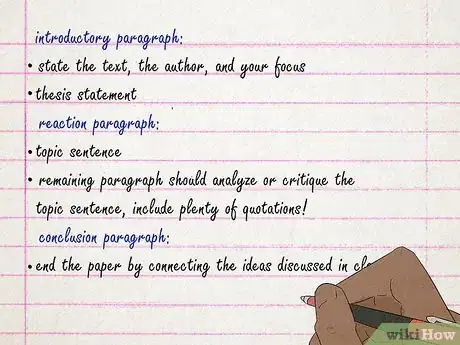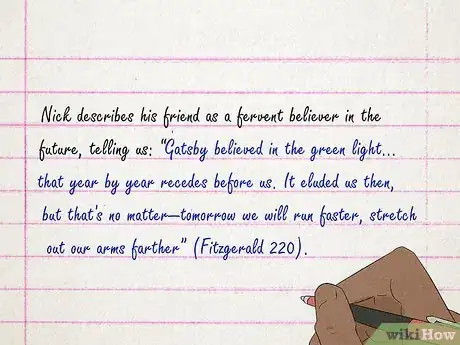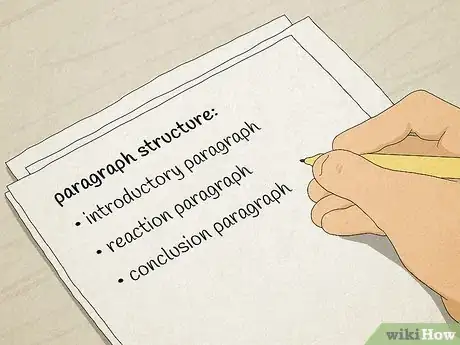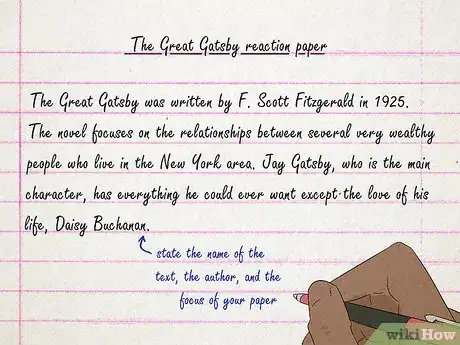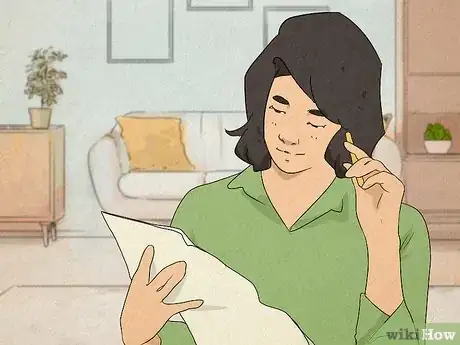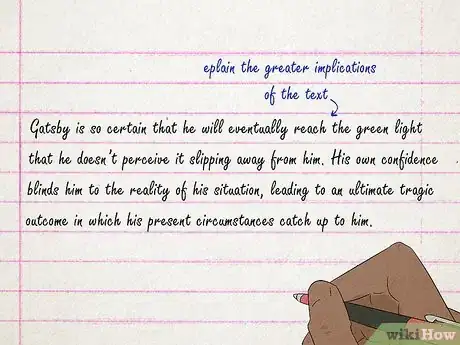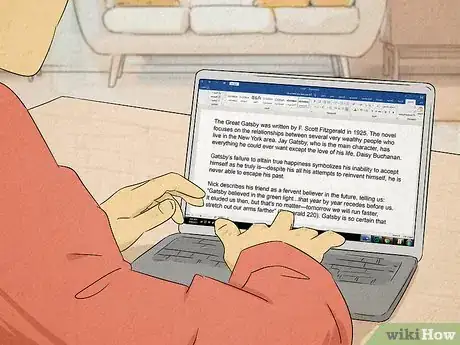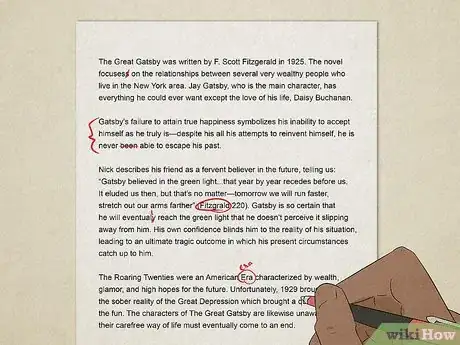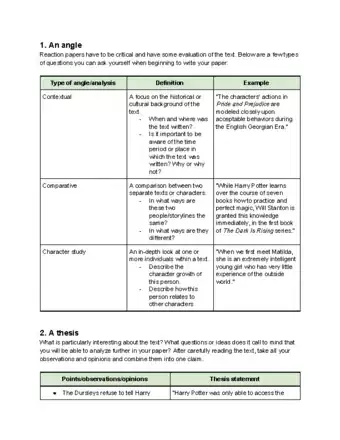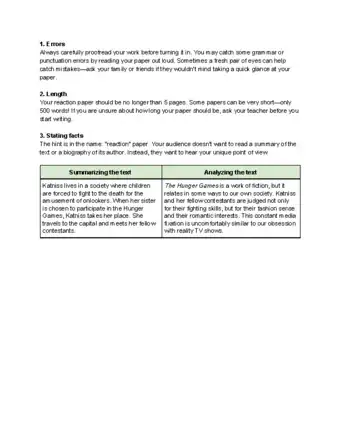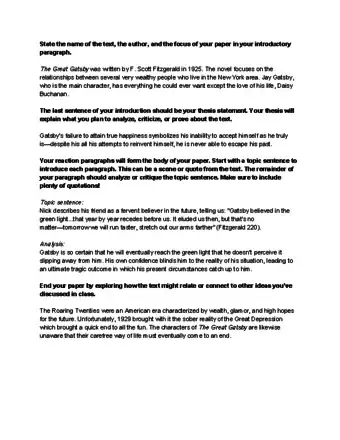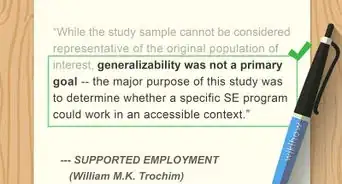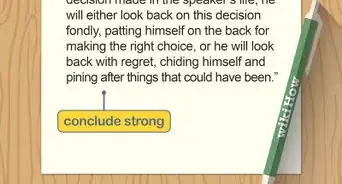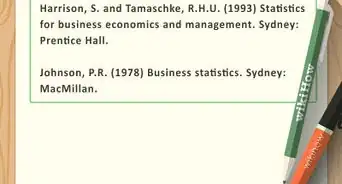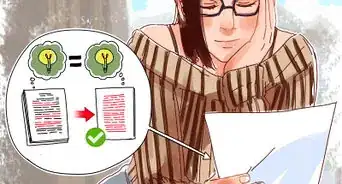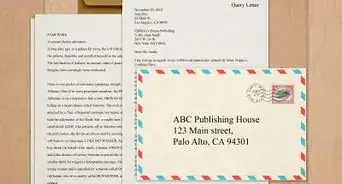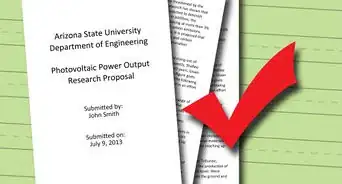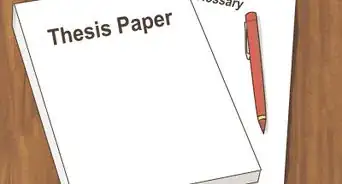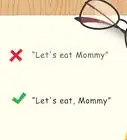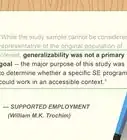This article was co-authored by Rachel Scoggins, PhD. Rachel Scoggins is a Visiting Assistant Professor of English at Lander University. Rachel's work has been presented at the South Atlantic Modern Language Association and the Georgia International Conference on Information Literacy. She received her PhD in Literary Studies from Georgia State University in 2016.
There are 9 references cited in this article, which can be found at the bottom of the page.
wikiHow marks an article as reader-approved once it receives enough positive feedback. This article has 15 testimonials from our readers, earning it our reader-approved status.
This article has been viewed 1,092,349 times.
A reaction or response paper requires the writer to analyze a text, then develop commentary related to it. It is a popular academic assignment because it requires thoughtful reading, research, and writing. You can learn how to write a reaction paper by following these writing tips.
Steps
Prewriting and Actively Reading
-
1Understand the purpose of a reaction paper. Reaction or response papers are assigned so that after reading a text, you will think carefully about what you feel or think about the text. When you write a response paper, you need to evaluate the text's strengths and weaknesses, along with if and how well the text accomplishes its objective. A reaction paper is not just a paper where you express your opinion. These papers require a close reading of the text that goes beyond the surface meaning. You must respond to implied ideas, and elaborate, evaluate, and analyze the author's purpose and main points. In many cases, you can use the first-person "I" while writing reaction papers.[1]
- When you respond to the text, back up your ideas with evidence from the text along with your own connection of ideas, texts, and overarching concepts. If you are asked to agree or disagree, you have to provide convincing evidence about why you feel this way.[2]
- If responding to multiple texts, you must analyze how the texts relate. If responding to one text, you probably should connect the text to overarching concepts and themes you have discussed in the class.
- The same assignment may also be given to films, lectures, field trips, labs, or even class discussions.
- A reaction paper is not a summary of the text. It also does not state, "I liked this book because it was interesting" or "I hated this because it was boring."[3]
-
2Figure out what the assignment is asking. Before beginning your paper, you must figure out exactly what your teacher or professor is looking for. Some teachers want you to react by analyzing or evaluating the reading. Other teachers want a personal response. Make sure you understand which kind of reaction the assignment calls for.[4]
- If you are unsure, ask the teacher to clarify what they expect from the assignment.
- You may be asked to react to the text in light of another text. If this is the case, you will want to use quotations from both texts in your writing.
- You may be asked to react to the text in the light of the class themes. For example, if you read a book in a Sociology of Gender Roles class, you will want to read, annotate, and react based on how gender roles are described in the book.
- You may be asked to react personally to the text. This is less common, but occasionally the teacher simply wants to know if you have read the text and thought about it. In this case, you should focus on your opinions of the book.
Advertisement -
3Read the text you are assigned right after it is assigned. To complete a reaction paper, you don't just read, give your opinion, and turn in the paper. A reaction paper synthesizes the texts, which means you take the information you read and bring it together so you can analyze and evaluate. You have to give yourself time to do the readings, but more importantly, to digest what you've read so you can put the ideas together.
- One of the biggest mistakes that students make is waiting until the last minute to read and react. A reaction is a thoughtful consideration after reading and rereading several times.
- You may need to reread the text multiple times. First, to read and familiarize yourself with the text, then again to start thinking about the assignment and your reactions.
-
4Write down your initial reactions. After you read through the first time, jot down your initial reactions to the text. Do the same thing on any subsequent readings.[5]
- Try completing some of the following sentences after you read: I think that..., I see that..., I feel that..., It seems that..., or In my opinion...
-
5Annotate the text as you read. As you read through the text again, annotate it. Annotating in the margins of the text allows you to easily locate quotations, plot lines, character development, or reactions to the text. If you fail to annotate thoroughly, it will be more difficult to create a cohesive reaction paper.
-
6Question as you read. As you read the text, you have to start questioning the text. This is where your evaluation of the material and your reaction begins. Some questions to consider include:
- What issues or problems does the author address?
- What is the author's main point?
- What points or assumptions does the author make, and how does she back that up?
- What are strengths and weaknesses? Where are problems with the argument?
- How do the texts relate? (if multiple texts)
- How do these ideas connect to the overall ideas of the class/unit/etc?
Drafting Your Essay
-
1Freewrite. Start by freewriting your reactions and evaluations of the author's ideas. Try to put into words what you think the author is trying to do and whether you agree or disagree. Then ask yourself why, and explain why you think these things. Freewriting is a great way to start getting your ideas on paper and getting past that initial writer's block.[6]
- When you finish, read back over what you've just written. Determine what your strongest and most convincing reactions are. Prioritize your points.
-
2Decide on your angle. Reaction papers have to be critical and have some evaluation of the text. Otherwise, you are just summarizing what you read. After freewriting, decide what your angle is. Keep asking yourself the same questions as you craft a coherent reaction.
- Think about why the author has written the article or story as they have. Why did he structure things in this particular way? How does this relate to the outside world?[7]
-
3Determine your thesis. Now that you have completed your freewriting and found your angle, you can now shape this into an argument. What interesting thing do you have to say about what you just read? Start to state why what you said is interesting and important. This is the core of your reaction paper. Take all your points, opinions, and observations, and combine them into one claim that you will prove. This is your thesis.[8]
- Your thesis will be one statement that explains what you will analyze, criticize, or try to prove about the text. It will force your reaction paper to remain focused.
-
4Organize your paper. Your paper should follow basic essay format. It needs an introduction, body paragraphs, and a conclusion. Each body paragraph should directly support your thesis. In each body paragraph, you should be reacting to a different portion of the text. Organize your reactions together into a few common topics so you can write them into paragraphs.[9]
- For example, if you are reacting to a theme in a book, you can split the paragraphs into how the setting, antagonist, and figurative imagery communicate the themes successfully or unsuccessfully.
-
5Gather quotations. After you organize your ideas into paragraphs, you need to find quotations that will support your points. You must back up your claims with evidence from the text. Look at your annotations for quotations that support your thesis.[10]
- Draft paragraphs that introduce quotations, analyze them, and comment on them.
-
6Structure your paragraphs. Your paragraphs should always start with a topic sentence. Then you have to decide how to structure your paragraph. You can start with what the author says and follow that with your reaction. Or you can start with the author and then follow with how your reaction contrasts. You generally want to start with what the author says first and follow it with your reaction.[11]
- A good way to think about structuring your paragraph is: detail, example/quotation, commentary/evaluation, repeat.
Writing Your Final Draft
-
1Write your introduction. Make sure your introductory paragraph states the name of the text, the author, and the focus of your paper. You may also want to include the year of publication and the publication it was taken from if relevant. It is also good to include the topic of the text and the author's purpose.[12]
- The last sentence of your introduction should be your thesis.
-
2Reread your reaction paragraphs to ensure you make a stance. Although most reaction papers don't ask specifically for your personal opinion, you should be critiquing, analyzing, and evaluating the text, rather than just sticking to the facts.
- Look for places where you simply report what the texts says instead of providing a critique or evaluation of what the text says.
-
3Explain the greater implications of the text for the class, author, audience, or yourself. One good way to analyze and evaluate the text is to connect it to other ideas you've discussed in the class. How does this text compare to other texts, authors, themes, or time periods?
- If you have been asked to give a statement about your personal opinion, the conclusion may be the best place to insert it. Some teachers may allow you to state the personal opinions in the body paragraphs. Make sure to double check with the teacher first.
-
4Edit for clarity and length. Since reaction papers are usually short, you don't want them to be long. They can range from 500 words to 5 pages. Make sure to read your assignment carefully to make sure you follow directions.
- Read through for clarity. Are your sentences clear? Have you supported and fully argued your points? Is there any place where you're confusing?
-
5Proof and spell check your document. Proof by reading for grammar errors. Look for run ons, fragments, verb tense issues, and punctuation errors. Check for spelling.[13]
-
6Ask yourself if you responded to the assignment adequately. Double check your assignment guidelines. Make sure you have followed your teacher's directions. If you did, it is ready to submit.
Writing Help
Community Q&A
-
QuestionWhat are the parts of a reaction paper?
 Community AnswerThe parts of a reaction paper are (in order) the introduction of the given topic, the body of the topic, and the conclusion of the given topic.
Community AnswerThe parts of a reaction paper are (in order) the introduction of the given topic, the body of the topic, and the conclusion of the given topic. -
QuestionIs it easy to write a reaction paper?
 Community AnswerIt depends on your topic and level of writing skills. In general, a reaction paper is an easier paper to write than others (like research papers).
Community AnswerIt depends on your topic and level of writing skills. In general, a reaction paper is an easier paper to write than others (like research papers). -
QuestionHow do I know when my reaction paper is wrong?
 Community AnswerA reaction paper is never wrong - it's based on your opinion. Just make sure you understand your topic well and use evidence to support your opinions.
Community AnswerA reaction paper is never wrong - it's based on your opinion. Just make sure you understand your topic well and use evidence to support your opinions.
References
- ↑ https://www.umgc.edu/current-students/learning-resources/writing-center/online-guide-to-writing/tutorial/chapter8/ch8-14
- ↑ http://www.esc.edu/online-writing-center/resources/academic-writing/types/summary-reaction-papers/
- ↑ http://utminers.utep.edu/omwilliamson/engl0310link/readerresponse.htm
- ↑ https://www.hunter.cuny.edu/rwc/handouts/the-writing-process-1/invention/Writing-a-Response-or-Reaction-Paper
- ↑ https://www.hunter.cuny.edu/rwc/handouts/the-writing-process-1/invention/Writing-a-Response-or-Reaction-Paper
- ↑ https://www.umgc.edu/current-students/learning-resources/writing-center/online-guide-to-writing/tutorial/chapter8/ch8-14
- ↑ http://study.com/articles/Step-by-Step_Guide_to_Writing_a_Great_Reading_Response_Paper.html
- ↑ https://www.umgc.edu/current-students/learning-resources/writing-center/online-guide-to-writing/tutorial/chapter8/ch8-14
- ↑ https://www.hunter.cuny.edu/rwc/handouts/the-writing-process-1/invention/Writing-a-Response-or-Reaction-Paper
- ↑ https://writingcenter.unc.edu/tips-and-tools/quotations/
- ↑ https://success.uark.edu/get-help/student-resources/reaction-paper.php
- ↑ https://writingcenter.unc.edu/tips-and-tools/introductions/
- ↑ https://owl.purdue.edu/owl/general_writing/the_writing_process/proofreading/proofreading_for_errors.html
About This Article
To write a reaction paper, start by carefully analyzing the thing you're supposed to be reacting to. Then, write down your initial reactions and thoughts. Try to come up with an angle for your paper, like that you disagree with the subject or that you think it has a deeper meaning. Once you've got an angle, summarize it in the introduction of your paper and use the body paragraphs to support it. Remember to use direct quotes and specific examples to back up what you're saying. When you're finished, reread your paper to make sure your angle is clear. If you want to learn how to set up topic sentences in your paragraphs from our Literary Studies Ph.D. co-author, keep reading!
